Woodworking with clamps.
Clamps, and using them correctly, are a key aspect of any woodworking operation. Woodworking with clamps can assist with building high-quality wooden articles while any woodworker worth his salt will agree, you can never have too many clamps.
Importance of clamping?
In the wonderful world of woodworking, it is the level of accuracy at which the woodworker executes the use of his tools that will distinguish his works from that of others. But how to tip the odds in your favor? Increasing the chances that you will indeed guide your saw in a straight line, drill straight or follow the correct curve when routing. That’s where clamps come in. Securing the workpiece frees up both hands to operate or use a tool. The biggest advantage being, better control of the tool will lead to the more accurate use of the tool.
Working safer with clamps.
Some power tools like routers and circular saws require two hands to operate effectively. This means that you have to secure your workpiece to prevent your router or circular saw turning into a wood launcher. This is done by using your range of clamps or a vice to secure the workpiece to your bench or any object heavy enough to withstand the forces exerted by the tooltip.
Using clamps to set up a fence or a guide.
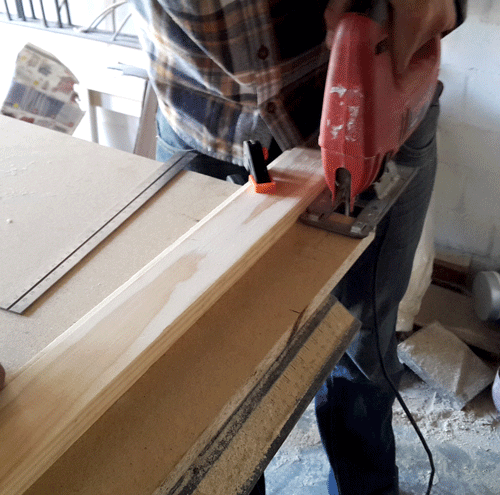
This ensures a fixed reference point to use as a tool guide (Curved or straight).
Clamping down a straight edge to act as a fence and guide a circular saw will produce a near to table-saw-quality cut. The same method can also be implemented to guide a router or even a jigsaw.
This can also be a very useful practice when having to mimic an exact execution.
E.g. You have to cut 10 circles of the same size with a hole drilled in the center. In this case, you can make up a round piece of wood with a hole in the middle that will function as a template for the 10 pieces you have to prepare (you only have to measure and mark one, your template). Simply clamping this template over your workpiece and using it to guide your jigsaw and drill will speed up your production time as well as assist with ensuring consistency.
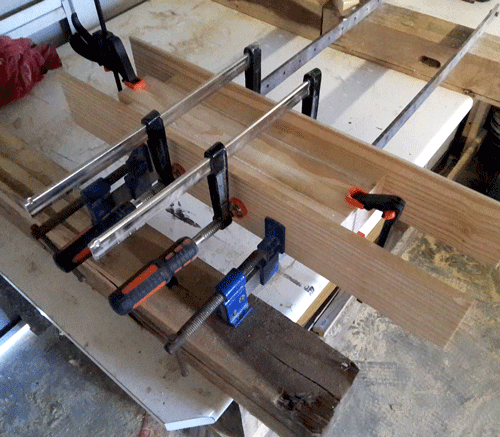 Using clamps for gluing.
Using clamps for gluing.
Wood glue is a great product that any woodworker should be quite familiar with. The only downside is it can take a few hours to cure properly. This means that whatever it is that you are gluing should be clamped together to apply enough pressure to allow the glue the opportunity to cure.
Clamps are also very useful when fixing different parts together with screws. Clamping them in place before fixing ensures that they don’t migrate to different positions if you have drilled a hole slightly of center or driving a screw at a slight angle.
Woodworking with clamps is like having extra hands to help out.
Different types of clamps
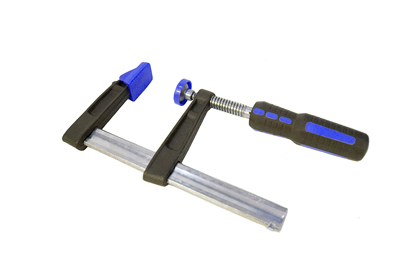 F-Clamp
F-Clamp
F-clamps (also called bar clamps) have a long versatile clamping distance due to their sliding jaw. These clamps come in a variety of lengths and throat depths and can exert medium to high levels of pressure. F-clamps can be used for a range of tasks including gluing and general clamping.
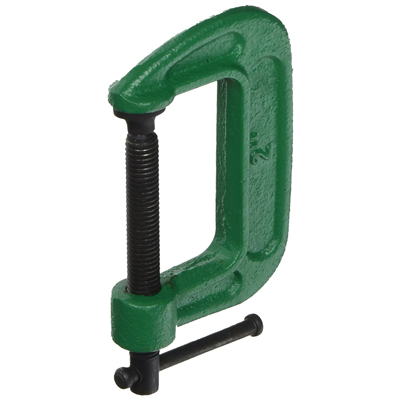 C-Clamp
C-Clamp
These clamps are very common, heavy-duty and widely used in different industries. C-clamps come in a variety of sizes but are less versatile than F-clamps.
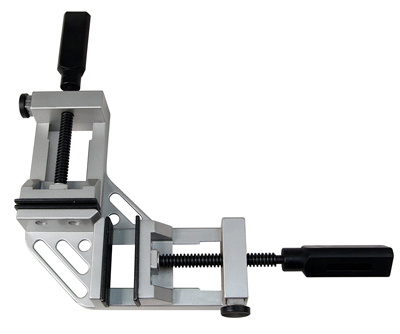 Miter Clamp
Miter Clamp
A miter clamp is designed to clamp at 90° and is mainly used to hold miter joints like the ones found on picture frames. They come in various designs all being able to apply different levels of pressure.
Sash Clamp
Also’ know as gluing clamps, are used when gluing segments of a workpiece together. Typically used in pairs the sash clamp would be placed on a flat surface and the workpiece placed on top of it. Similar to an F clamp, it also makes use of a sliding jaw but in the case of a sash clamp the jaw is normally set using a stopper pin.
Sash clamps apply higher levels of pressure.
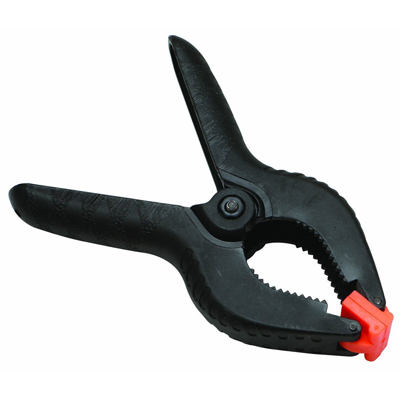 Spring Clamp
Spring Clamp
A spring clamp is a basic spring-loaded clamping mechanism and is easily used with one hand. They tend to be for more light-duty clamping operations like holding a stencil in place or to just apply less excessive but constant pressure.
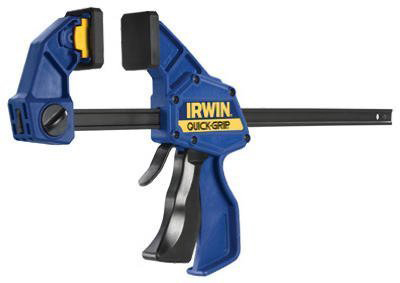 One-Handed Bar Clamps
One-Handed Bar Clamps
Light-weight and easy operation have made these clamps the cream of the crop in the woodworking community. Using one hand the clamp can easily be secured to the workpiece and tightened by squeezing the trigger repeatedly until the workpiece is clamped.
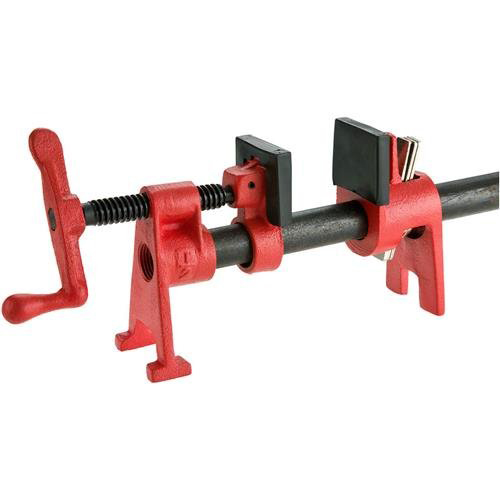 Pipe Clamps
Pipe Clamps
Very similar to sash clamps with heavy clamping capabilities and also mainly used for gluing or furniture making. Pipe clamps are quite versatile as they can be easily modified to accept different lengths of pipe making the overall clamp length longer or shorter.
In addition to the range of clamps available, a very useful tool to acquire for woodworking would be a good quality woodworking bench vise. These clamp to your bench and perform easy and fast single clamps. A bench vice is capable of generating a large clamping force and is generally a woodworker first stop when something needs clamping or securing.
Remember when using clamps to not grip directly on the workpiece. The pressure from the clamp can cause indentations on the wood. Especially on softwoods like pine. It’s always recommended to use a piece of scrap wood to act as a buffer to absorb most of the pressure.
 Woodworkjunkie.com, DIY like a pro.
Woodworkjunkie.com, DIY like a pro.

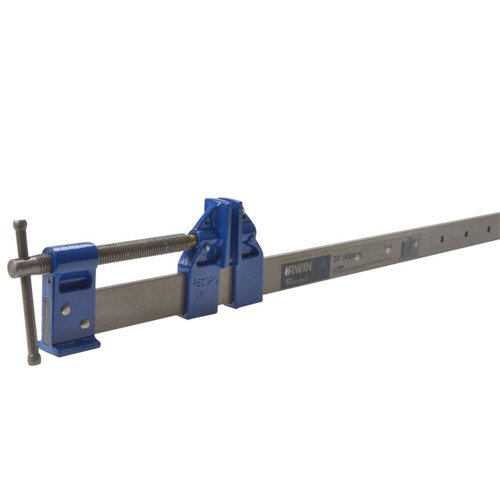
I will use clamps for the first time and how thick should be the piece of scrap wood for buffering?
And I also need a decent clamp for setting up a fence. If you can answer these questions, I will be really happy.
Hello Furkan
It does not have to be thick at all, 1/4″ will do the job, if its only function is to prevent the clamp from damaging the work piece but using thicker pieces of scrap wood allows better spreading of the clamps pressure over a larger area.
The one handed clamps will more then do the job when setting up a fence.
Hope this is helpful.
Jean
Very insightful article makes sense to use clamps if you are doing any kind of woodwork.
Hi Jean, great post describing the important of clamps. I read your post and smile at myself because I come to know why my front door and my windows are tilted.
Just a few days ago, I watched the Home Depot DIY program how to replace doors and windows. Ha ha, I thought It was very easy and I tried it out without a clamp. No work man! So, yesterday I went to buy a clamp. Tomorrow I will try to put on my door again.
After that I will come back to your site and share my experience here.
Woodworking is fun- right?
Thanks.
Hi
Yes, woodworking is fun. Unfortunately some beginners take on projects that they are not 100% ready for sometimes and become deterred when they struggle to complete it. This has happened to myself also. Beginners should pick projects that they are comfortable with and work at a pace they are able to manage.
Jean
Hi Jean
I have always drilled holes and used screws, but as You know that can leave alignment issues pending. what brand of glue would You recommend to use.
Nice choice of clamps to pick from to fit the project to work on. I can see where the clamps would give one the extra helping hand to work on projects. I will come back and review more of your website at a later date…………………..Douglas